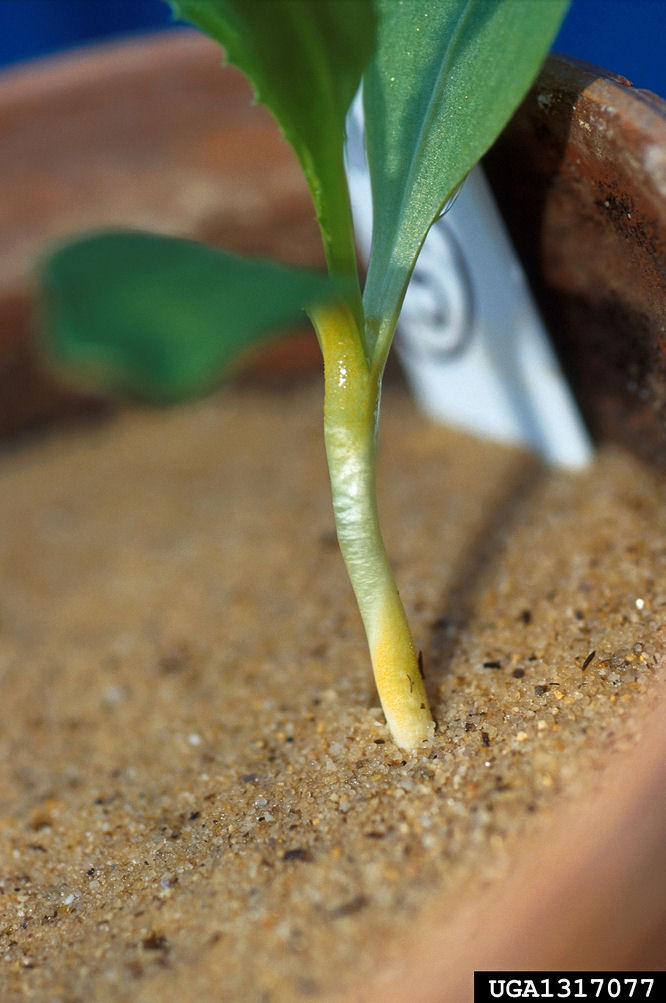Puccinia calcitrapae
| Puccinia calcitrapae | ||||||||||||
|---|---|---|---|---|---|---|---|---|---|---|---|---|

Puccinia calcitrapae on safflower |
||||||||||||
| Systematics | ||||||||||||
|
||||||||||||
| Scientific name | ||||||||||||
| Puccinia calcitrapae | ||||||||||||
| DC |
Puccinia calcitrapae is a stand fungal art from the order of the rust fungi (Pucciniales). The fungus is an endoparasite of burdock . Symptoms of the infestation by the species are rust spots and pustules on the leaf surfaces of the host plants. It is Holarctic and common in Oceania .
features
Macroscopic features
Puccinia calcitrapae can only be recognized with the naked eye by means of the spore beds protruding on the surface of the host. They grow in nests that appear as yellowish to brown spots and pustules on the leaf surfaces.
Microscopic features
The mycelium of Puccinia calcitrapae grows as with all Puccinia TYPES intercellular and forms Saugfäden that grow into the storage tissue of the host. Their spermogonia grow on the upper side of the host leaves. The aecia of the species, which also grow on the top of the leaves, are cinnamon-brown and stand around the spermogonia. Its golden to cinnamon-brown aeciospores are 26–30 × 23–28 µm in size, almost spherical and spiky. The uredia of the fungus, mostly growing underneath the leaves, are cinnamon-brown and scattered. The golden to cinnamon-brown uredospores are 26–30 × 23–28 µm in size, almost spherical and spiky. The predominantly underside of the leaf growing parts of the species are black-brown, powdery and uncovered. The chestnut-brown teliospores are two-celled, usually ellipsoidal, finely warty and mostly 32–44 × 22–28 µm in size. Their stem is colorless.
distribution
The known distribution area of Puccinia calcitrapae includes North America , Eurasia , Australia and New Zealand .
ecology
The host plants of Puccinia calcitrapae are various burdock ( Arctium spp.) And other genera of the daisy family such as ring thistles , boar root and safflower . The fungus feeds on the nutrients present in the storage tissue of the plants, its spore beds later break through the leaf surface and release spores. The species goes through a macrocyclical development cycle with Spermogonia, Aecien, Telien and Uredien. As an auto-ecologic parasite, it does not change host .
literature
- George Baker Cummins : Rust Fungi on Legumes and Composites in North America . University of Arizona Press, Tucson 1978, ISBN 0-8165-0653-1 .
Individual evidence
- ↑ DM. Henderson: The Rust fungi on the British Isles. A guide to identification by their host plants. British Mycological Society. 2004. Online (PDF; 10.2 MB)